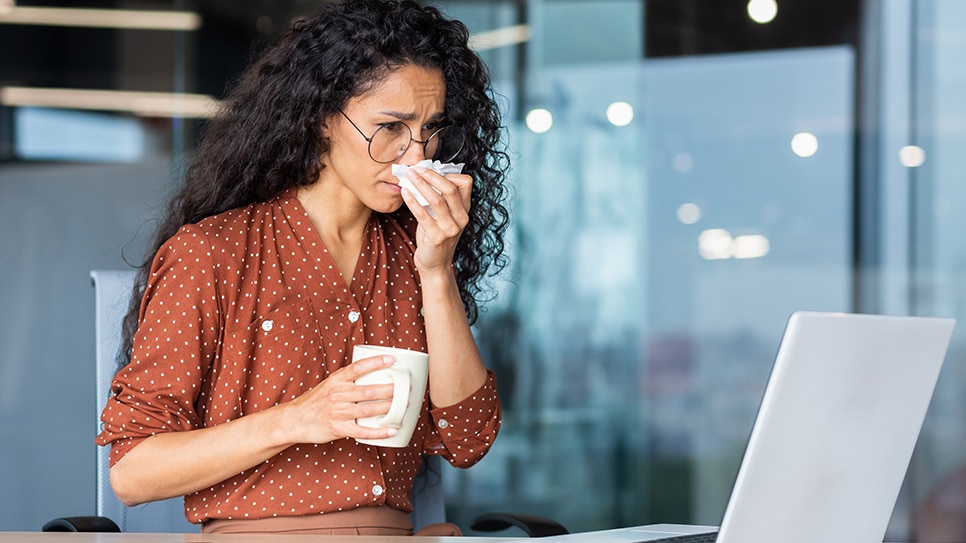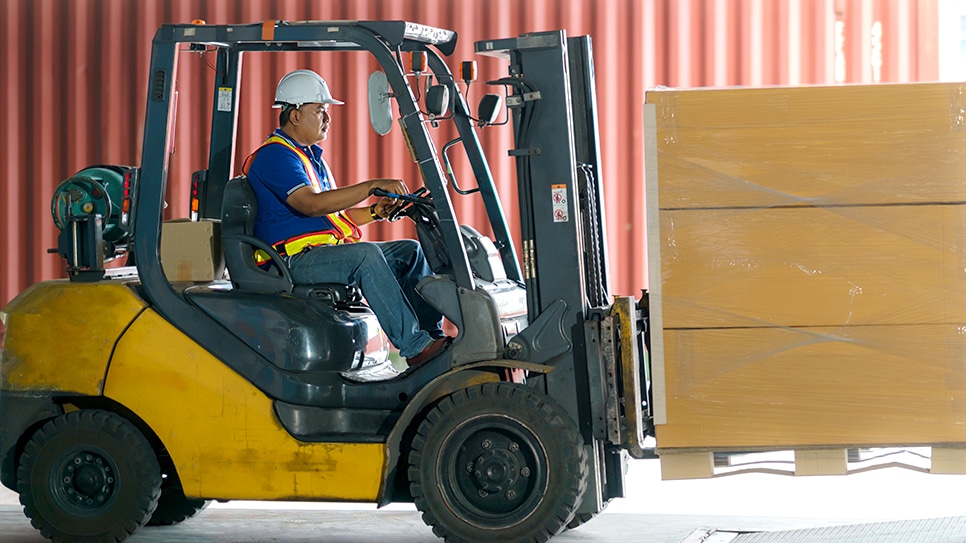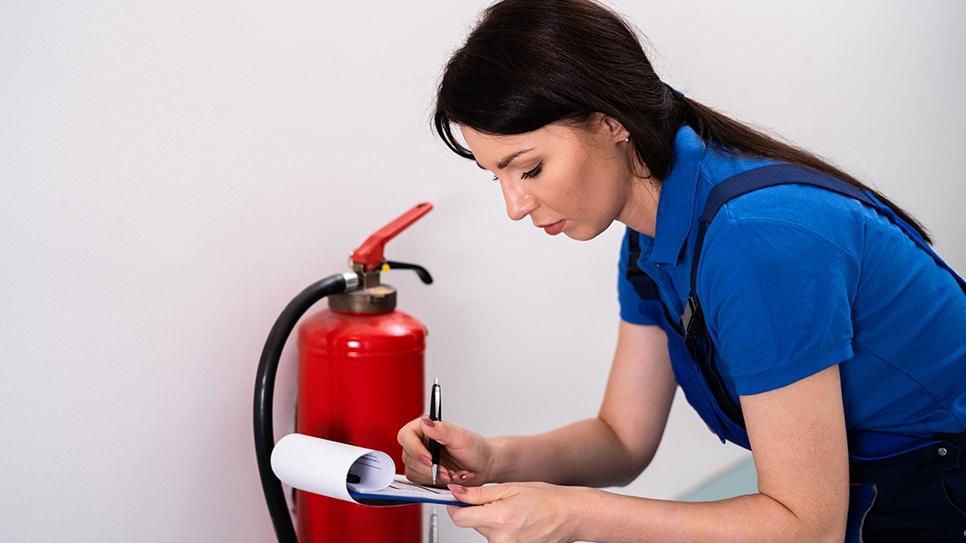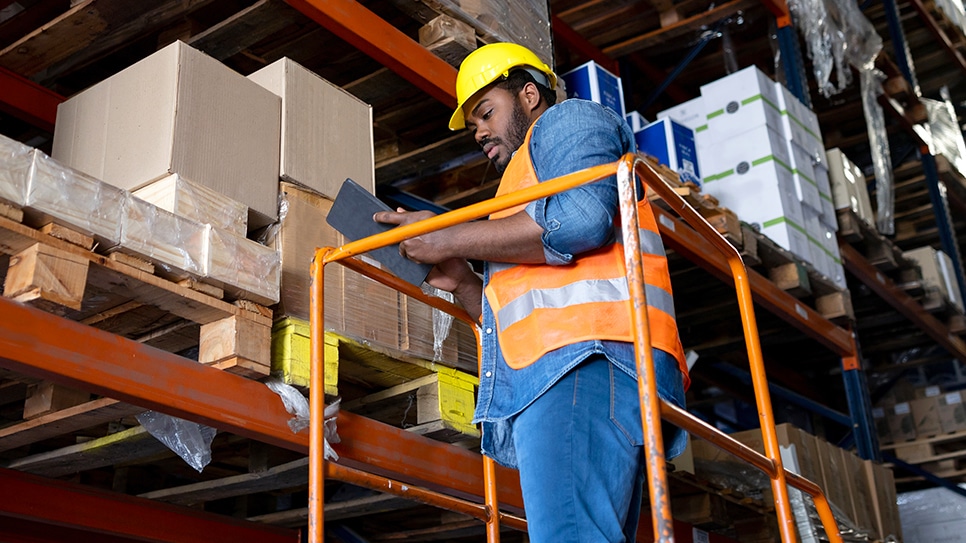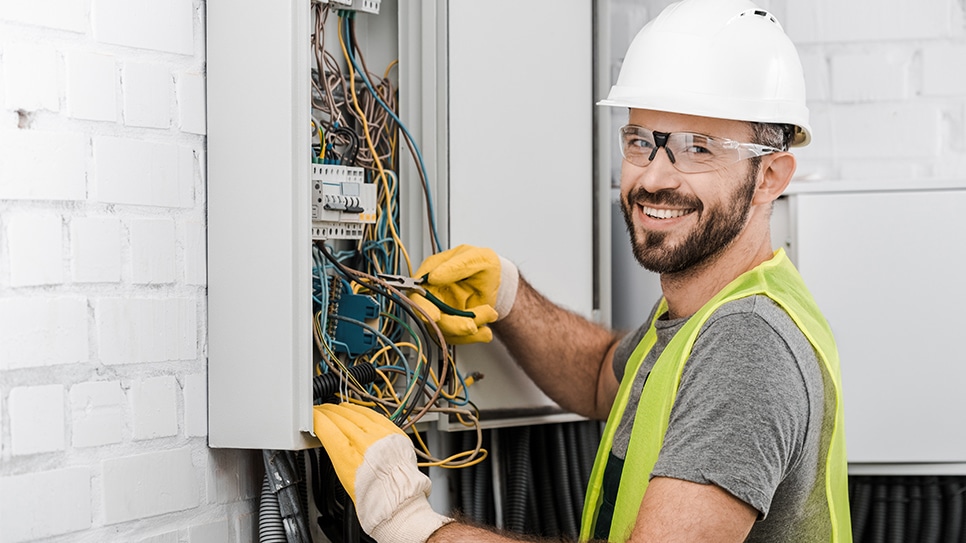
Workplace Housekeeping Training for Employees and Businesses
Housekeeping is a critical aspect of workplace safety that involves keeping workspaces clean, organized and free of potential hazards.
Course description
Traliant’s Housekeeping training is a 20-minute course covering how to maintain good housekeeping in different work environments and ways to help prevent workplace falls, fires and health hazards through housekeeping protocols. It provides simple yet effective best practices that every employee can do to keep their work environment safe, healthy and productive.
ONLINE TRAINING
Workplace Housekeeping Training for Employees and Businesses
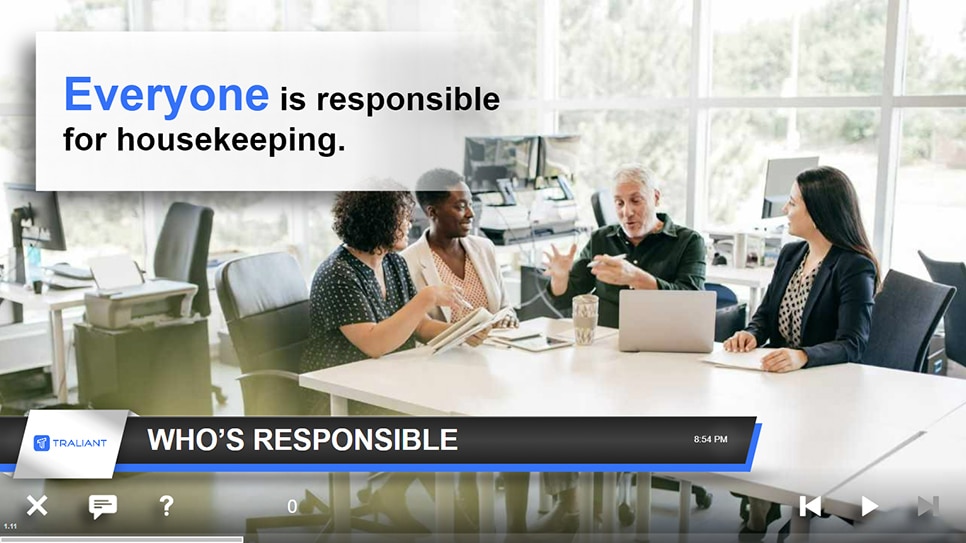
Housekeeping covers these topics and more:
- What is housekeeping?
- Areas of focus and best practices
- Why paying attention to housekeeping at work is important
- Purpose and benefits of workplace housekeeping
- Elements of an effective housekeeping program
KEY FEATURES
Why you'll love our training
It’s time to embrace a new era of online training with a valued partner who will ensure seamless implementation, along with a learning experience your employees will truly enjoy.
Course administration
Traliant makes it simple to roll out training to your workplace and provide technical support directly to your employees at no additional cost.
Course customizations
Tailor courses to include your logo, relevant policies, workplace images, and more. Traliant can even customize the course with scenarios that take place in your own workplace environment.
Translations
Training is available in English, Spanish and is supported in over 100 languages.
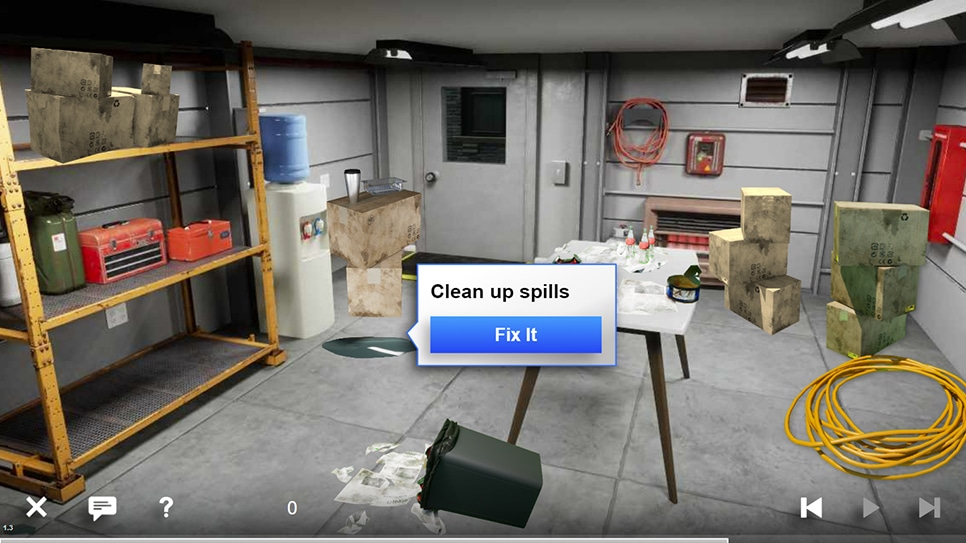
- Prevent accidents and injuries: Poor housekeeping practices, such as clutter, spills, and improperly stored materials, can lead to slips, trips, falls, fires, and other accidents. Training helps to reduce the risk of these incidents.
- Create a safer workplace: Training helps to create a safer work environment for everyone.
- Improve productivity: A clean and organized workplace is more efficient and productive.
- Empower employees: Training provides employees with the knowledge and skills they need to maintain a clean and organized workspace.
- Strengthen your organization's commitment to safety: Training demonstrates the company's commitment to providing a safe working environment.
- Reduce the risk of accidents and injuries: When employees are aware of the risks and take precautions, they are less likely to have an accident.
- Maintaining clean and organized work areas: This includes keeping floors clean and dry, removing clutter, and organizing tools and materials.
- Properly storing materials: Hazardous materials should be stored safely and securely, and all materials should be stored in designated areas.
- Disposing of waste properly: Waste should be disposed of in accordance with company policies and environmental regulations.
- Maintaining equipment: Equipment should be cleaned and maintained regularly to prevent malfunctions and accidents.
- Written procedures: Develop clear and concise written procedures for housekeeping tasks.
- Regular inspections: Conduct regular inspections of work areas to identify potential hazards.
- Employee training: Provide training to employees on housekeeping procedures and best practices.
- Accountability: Hold employees accountable for maintaining a clean and safe work environment.
- Slips, trips, and falls: These are often caused by wet floors, loose rugs, clutter, or uneven surfaces.
- Prevention: Clean up spills promptly, keep walkways clear of obstacles, use non-slip mats, and repair damaged flooring.
- Fires: Fires can be caused by improperly stored flammable materials, faulty electrical equipment, or smoking.
- Prevention: Store flammable materials in approved containers and in designated areas, inspect electrical equipment regularly, and prohibit smoking in the workplace.
- Exposure to hazardous substances: Chemicals, dust, and other hazardous substances can pose health risks.
- Prevention: Use ventilation systems to remove hazardous substances from the air, provide personal protective equipment (PPE), and train employees on safe handling procedures.
- Reduced time searching for tools and materials: When items are stored in designated locations, employees spend less time searching for them.
- Increased focus and concentration: A clutter-free workspace can help to improve focus and concentration.
- Improved morale: A clean and organized workplace can boost employee morale and create a more positive work environment.

